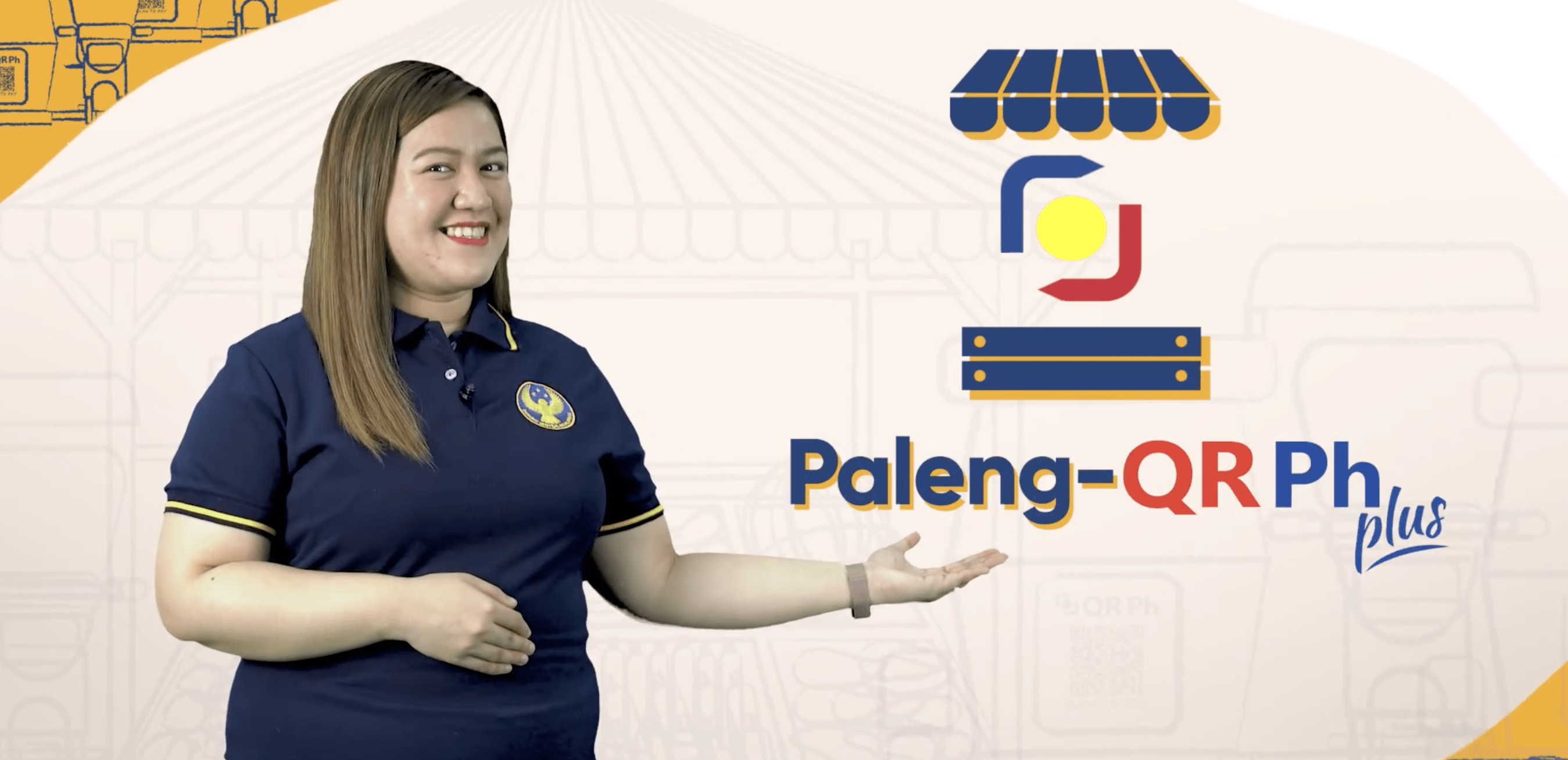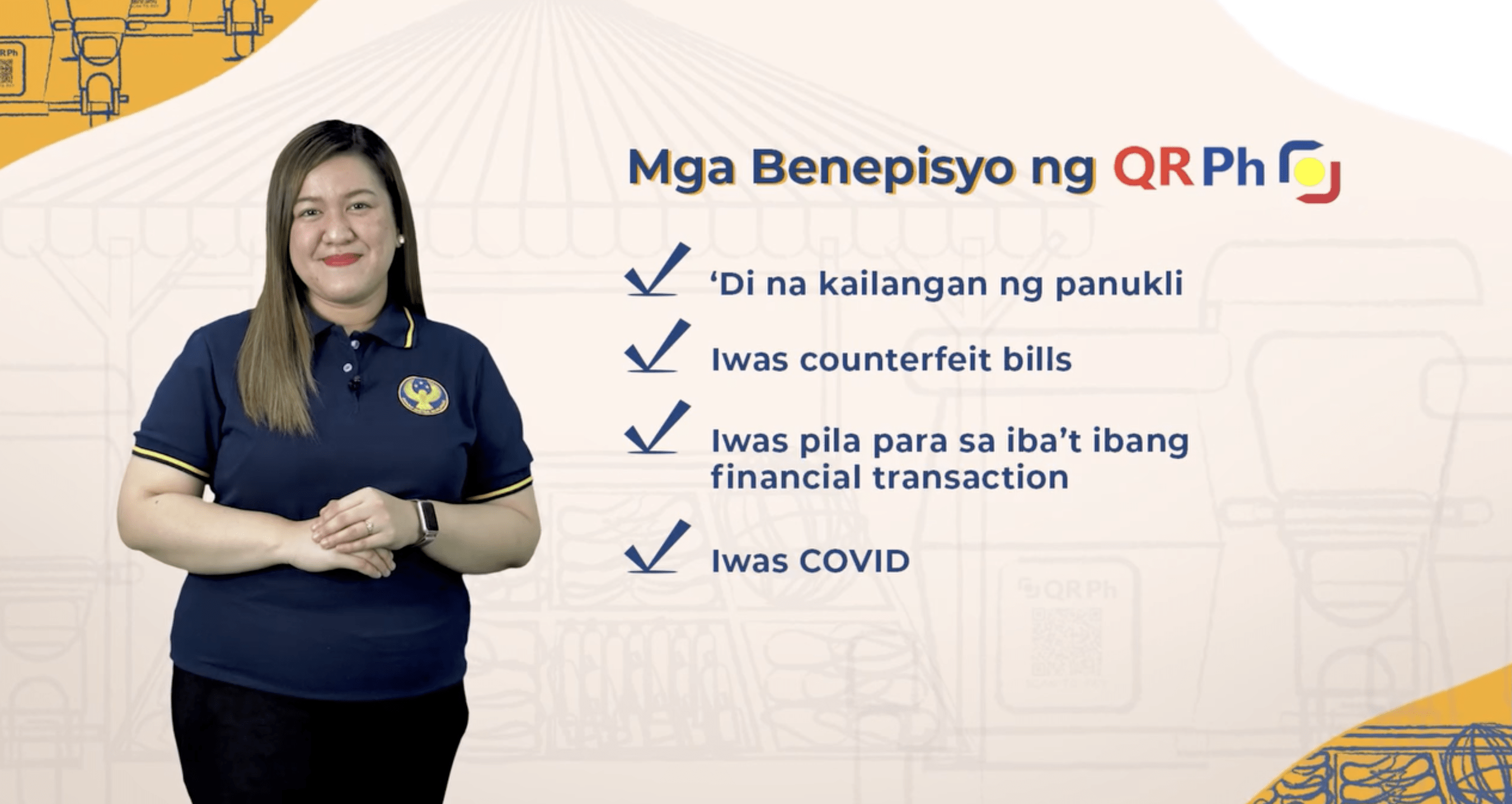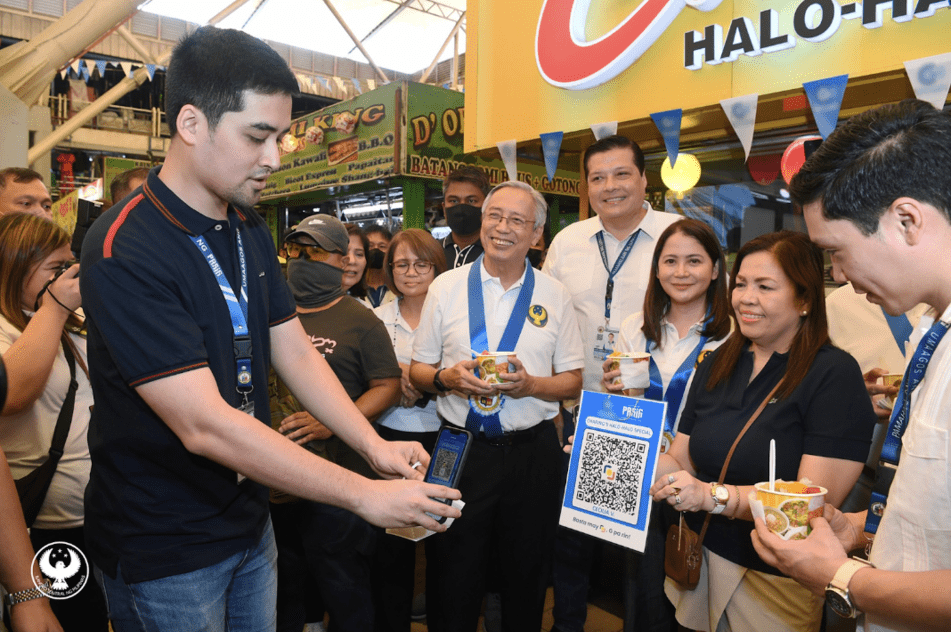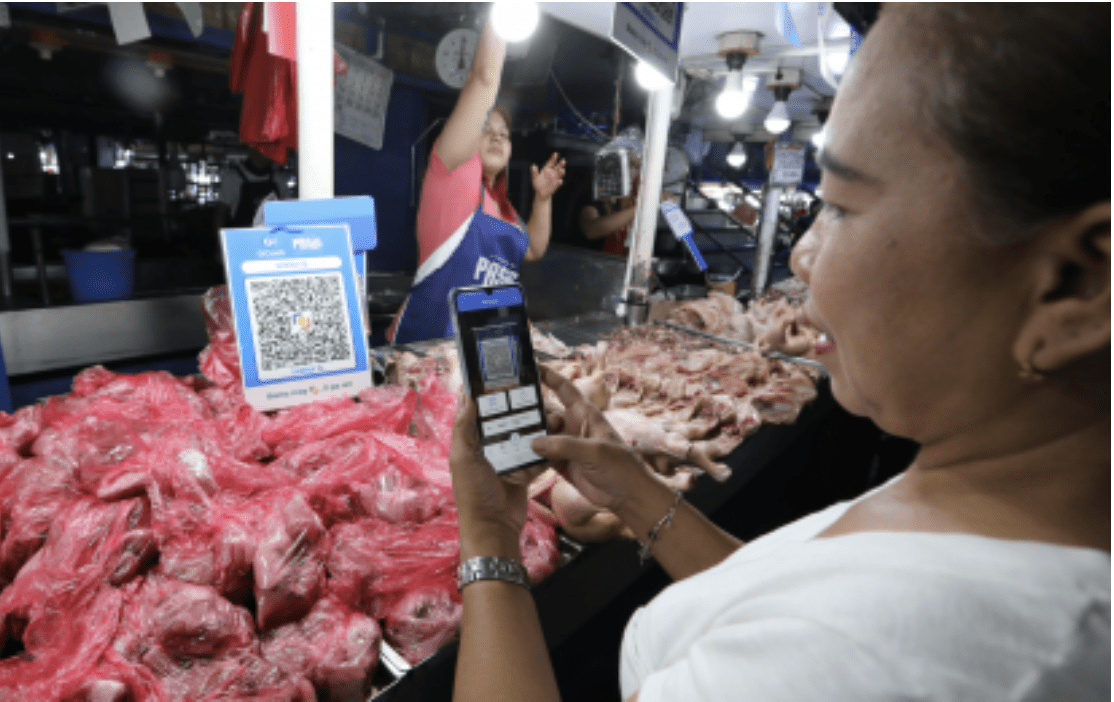The Bangko Sentral ng Pilipinas actively supports the national government's digitalization thrusts. (Screengrab from the official Facebook page of the Bangko Sentral ng Pilipinas)
Did you know that you can now pay for goods and services in public markets using your e-wallet?
Cashless transactions are often spotted in large-scale business establishments as an option for people who prefer digital payments.
Until recently, the Paleng-QR PH Plus made it possible for small businesses to also provide their customers with cashless payment options.
How does the Paleng-QR Ph Plus work?
It was in 2019 when the Bangko Sentral ng Pilipinas (BSP) launched the “QR (Quick Response) Ph” as the national QR Code standard.
The aim of this initiative is to adopt an efficient, standardized digital payment system for both merchants and customers in the country.
With QR Ph, there is no need for merchants to display numerous QR codes to accept digital payments from customers who are using different bank service providers or e-money issuers (EMIs).
Similar to other cashless transactions, payments using the Paleng-QR Ph Plus also utilize portable digital devices, particularly mobile phones.
Customers only need to scan the QR Ph code using the respective application of their bank or EMI to proceed with the payment transaction.
This digitalization initiative was jointly developed by the Bangko Sentral ng Pilipinas (BSP) and the Department of the Interior and Local Government (DILG) with the goal of providing safer, faster, and more convenient payment methods.

BSP introduces the use of the Paleng-QR Ph Plus towards the attainment of a secure cashless future. (Screengrab from BSP)
Who can participate in the Paleng-QR Ph Plus program?
Pursuant to the joint memorandum circular (JMC) issued in 2022, all local government units (LGUs) are encouraged to implement the Paleng-QR system in all cities and municipalities in the country.
To ensure that no one is left behind in the achievement of a cashless future, not only public market vendors can make use of the system.
Various merchants or business owners belonging to the micro, small, and medium enterprises (MSMEs) sector as well as community shopkeepers can also integrate the QR Ph in their daily transactions.
Tricycle operators and drivers (TODA), in particular, are included among the target participants of the program.
This is primarily because purchasing and commuting form a significant part of the daily transactions of Filipinos.
By using the Paleng-QR code, it substantially reduces the need for vendors and drivers to prepare funds for loose change. It also protects them from the instances of receiving counterfeit bills. Long queues will likewise be prevented because of the faster payment option that the system offers.

BSP highlights the benefits of using the QR Ph system. (Screengrab from BSP)
How can you implement the Paleng-QR system in your tindahan and transport vehicles?
Once markets and local transport hubs are Paleng-QR system-ready, LGUs are mandated to incentivize or require the use of the system through an ordinance.
LGUs are also expected to provide the needed assistance of market vendors, tricycle drivers, or sari-sari store owners in making their own transaction accounts. This will be done by conducting a designated “Account Opening Day” with the help of the participating financial service providers (FSPs).
The initiative also anchors the provision of financial literacy programs centered on the effective use of digital payments alongside strengthened consumer protection.
After learning about the know-hows of the system, merchants and customers can already use the Paleng-QR in their daily transactions.
“Until a market vendor and tricycle driver can accept digital payments, transitioning to cashless transactions would be difficult for an average Filipino consumer,” the BSP cited.
Where can you try using the Paleng-QR?
There are two LGUS in the National Capital Region (NCR) that already implement the Paleng-QR Ph Plus system.
In March last year, the local government of Pasig adopted the use of the system in its Mega Market. More than 2,000 vendors were able to pilot their digital payment options for customers.

Pasig City Mayor Vico Sotto scans Paleng-QR code to pay for halo-halo. (Photo Courtesy: BSP)
Recently, Quezon City copied Pasig’s move in implementing the Paleng-QR Ph digital payment system in Project 4 Public Market last January 19.

A customer uses Paleng-QR to pay for the foodstuff at a public market. (Photo Courtesy: Philippine News Agency)
The Quezon City LGU makes sure that merchants and customers can readily make use of the Paleng-QR by connecting to over 3,500 wifi hotspots that are available across the city.
On the other hand, by having a digital transaction account, it becomes easier for residents to avail of various financial services from LGUs such as “ayuda.”
The creation of the Paleng-QR Ph Plus system is reflective of the national government’s commitment to include everyone in the pursuit of a digital nation.
Embracing this innovation, specifically in the aspect of financial inclusion, is a significant step towards enabling a secure digital future for Filipinos. (JMP/PIA-NCR)
